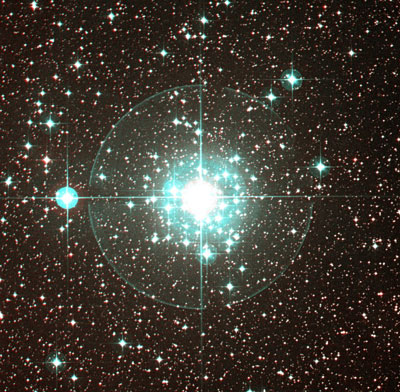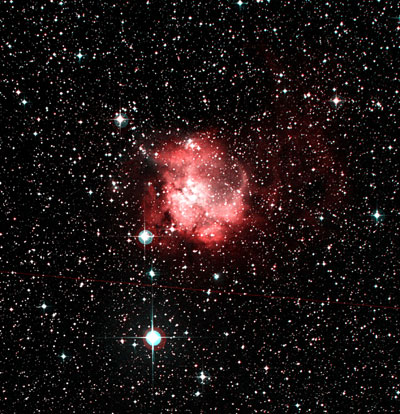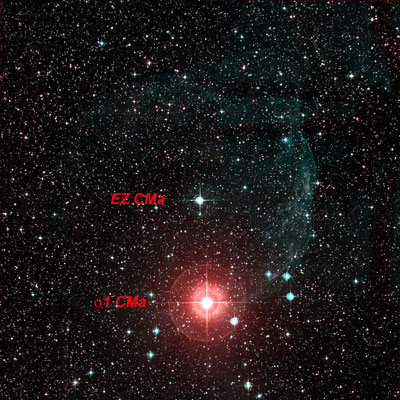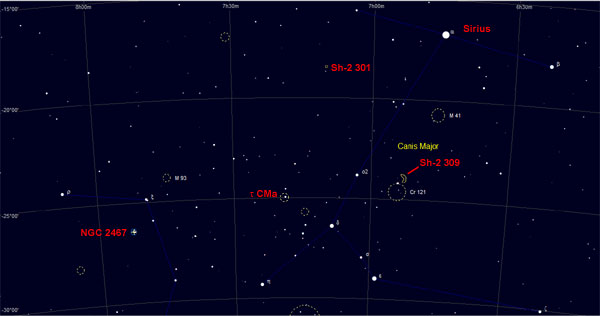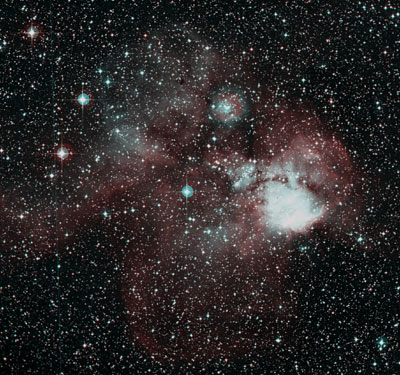
NGC 2467 or Sh2-311 in Puppis (07h53, -26°23') is a HII region embedding a small Open Cluster. The emission nebula is not very large, but nevertheless quite bright. With my 14" Dobson, I could discern two darker region that extend from the eastern border to the center of the HII region (around the little cluster Haffner 18) and a marked dark lane that separates a northern bright patch from the main mass of the nebula. Due to these dark clouds and filaments NGC 2467 resembles a smaller version of M8, the Laguna Nebula. To the North is a little Stroemgren Sphere around the little cluster Haffner 19.
The HII region was visible without problem even without filter or with a smaller telescope, such as my 8-Inch Dobson. It responds very well to UHC narrow band or OIII filtering. I found the view with the broader UHC filter more pleasing, as the stars were not as suppressed as with OIII, which gives this HII region a special touch.
With the OIII filter, another large part of the nebula stands out to the NW of the main mass. This part forms a 20-30 arcminutes long crescent, facing away from the main nebula. This remarkably large part appears to emit light mainly in the OIII bands and is hence not very pronounced in the DSS image to the left.
